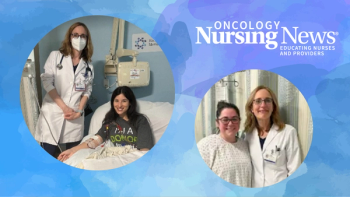
Twitter Lends Insight to HPV-Associated Oral Cancer Knowledge
The HPV vaccine is commonly associated with preventing cervical cancer, but it plays a major role in oral cancers, too.
The incidence of human papillomavirus (HPV)-associated oral cancer has risen in recent years, and the virus has now surpassed tobacco and alcohol use as the leading cause of the disease. In fact, while the HPV vaccine is typically associated with preventing cervical cancer, there have been more cases of HPV-associated oral cancer than there have been cervical cancer.1
While the link between oral cancer and HPV may be well-known to healthcare professionals, researchers at Howard University recently took to Twitter to get a glimpse into the public’s knowledge about the topic.
“By looking at the social media data, we wanted to know what people are hearing about oral cancer — especially HPV-caused oral cancer,” study co-author Jae Eun Chung, PhD, associate professor in the Department of Strategic, Legal & Management Communication at Howard University, said. “We wanted to see what the gaps are between the knowledge of the healthcare professionals and the public.”
The researchers collected 3,229 unique tweets over the course of 40 weeks using search terms such as “HPV or papilloma” and “mouth or oral or throat or pharyngeal or oropharyngeal.” They then used a program called nVivo 12.0 to conduct a content analysis that looked at certain phrasing, terms, and themes that commonly appeared.
More than half (54%; 1679 total) of the tweets had information about prevention, while 29% (910) were about the causes of oral cancer. Far fewer tweets were about treatment (5%; 141), diagnosis (3%; 97), symptoms (1%; 42), and prognosis (1%; 25).
Interestingly, the researcher discovered a prominence on the risk of HPV-associated oral cancer in men, with tweets that referred to males outnumbering tweets that referred to females in a 3:1 ratio. Also, the most popular hashtag used in the dataset was #jabsfortheboys, appearing in 89 tweets.
“There was a heavy emphasis on the risk of HPV-associated (oropharyngeal cancer) among men, which is different than what we see with HPV vaccination among girls,” Chung said. “That was very positive news to us, because HPV-associated (oral cancer) rates are higher among the male population and HPV vaccination rates are higher among girls.”
While spreading HPV vaccination and oral cancer is important on a global scale, the United States might have some catching up to do, as the 5 most mentioned Twitter users discussing the topic were located outside of the US—1 in New Zealand, 2 in Australia, and 2 in the United Kingdom.
“That’s kind of sad, because there are more Twitter users from the United States than from any other country,” Chung said.
Ultimately, Chung explained, these findings outlined an area where the country can benefit from more education and social media campaigns.
“In conclusion, this study provides some insight as to how the public makes sense of HPV-associated oral cancer,” she said. “More education and campaigns are needed, and US residents can benefit from more active involvement of US-based health education.”
Reference
1. Chung JE, Mustapha I, Gu X, Li J. Understanding public perception about human papillomavirus (HPV)-associated oropharyngeal cancer (OPC) through Twitter. Presented at: D.C. Health Communication Conference; Fairfax, Virginia; April 26-27, 2019.
Newsletter
Knowledge is power. Don’t miss the most recent breakthroughs in cancer care.






















































































